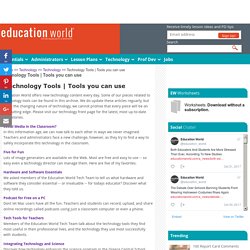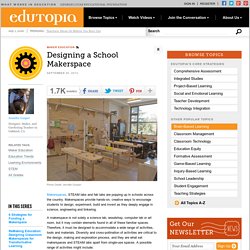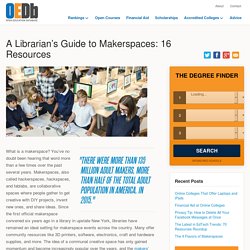

Videos, Common Core Resources And Lesson Plans For Teachers: Teaching Channel. K-12 Education Tips & Strategies That Work. The workspace for your life’s work. Lessons Worth Sharing. Khan Academy. Wikispaces. Blog Tool, Publishing Platform, and CMS.
The Educator's PLN - The personal learning network for educators. Challenge yourself to connect and learn through blogging. Testimonials. My Big Campus. Integrating Technology for Active Lifelong Learning. EFL 2.0 Directory. Connect With Students and Parents in Your Paperless Classroom. Study Skills Articles and Study Skills Tips. Membership, policy, and professional development for educators - ASCD. Online Research Library: Questia. A Research Guide for Students. Programs to Learn Faster and Communicate Better. Easypodcast.
Community Call Voice Chat Group Calling Teleconference Calling. Best Free Podcasts. Free Podcast Hosting, Podcast Social Subscribing. Technology Tools. Education World offers new technology content every day.

Some of our pieces related to technology tools can be found in this archive. We do update these aritcles reguarly, but given the changing nature of technology, we cannot promse that every piece will be on the cutting edge. Please visit our technology front page for the latest, most up-to-date tech stories. Social Media in the Classroom?
In this information age, we can now talk to each other in ways we never imagined. Five for Fun Lots of image generators are available on the Web. Hardware and Software Essentials We asked members of the Education World Tech Team to tell us what hardware and software they consider essential -- or invaluable -- for todays educator? Podcast for Free on a PC Dont let Mac users have all the fun. Tech Tools for Teachers Members of the Education World Tech Team talk about the technology tools they find most useful in their professional lives, and the technology they use most successfully with students. Summer Learning 2015 - Maker & Technology Programs.
Technology and “making” is a great way to follow your own interests and learn.

The Library is offering programs for all ages that incorporate hands-on learning opportunities using technology and making. Registration is required. Group size is limited for individual attention, so register early. Programs include: Technology Programs for Kids Day-long coding programs are scheduled for kids at the Cheviot, Avondale, Loveland, and Hyde Park branch libraries. Coding for Kids (ages 9 – 12) — Come explore the world of computer science with this hands-on computer coding workshop. Cheviot Branch Library — Monday, July 20, 1–2:30 p.m. Coding for Girls (ages 11–14) — Come explore the world of computer science with this hands-on computer coding workshop. Loveland Branch Library — Friday, July 10, 6:15–7:45 p.m.
Maker Programs for Teens Day-long programs for teens with a technology focus are scheduled in the MakerSpace at the Main Library as well as the St. St. Introduction. 1.

Students learn isolated skills and knowledge, starting with the simple building blocks of a particular topic and then building to more complex ideas. While this appeals to common sense (think of the efficiency of a automobile assembly line), the problem with this approach is the removal of any context to the learning, making deep understanding of the content less likely. Perkins calls this approach elementitis, where learning is structured exclusively around disconnected skills and fragmented pieces of information. 2. Students learn about a particular topic. The solution that Perkins offers to the typical classroom experience is what he calls learning by wholes, structuring learning around opportunities to experience or engage in the topic as it would exist outside of school.
The Partnership for 21st Century Skills. 21st Century Schools. Designing a School Makerspace. Makerspaces, STEAM labs and fab labs are popping up in schools across the country.

Makerspaces provide hands-on, creative ways to encourage students to design, experiment, build and invent as they deeply engage in science, engineering and tinkering. A makerspace is not solely a science lab, woodshop, computer lab or art room, but it may contain elements found in all of these familiar spaces. Therefore, it must be designed to accommodate a wide range of activities, tools and materials. Diversity and cross-pollination of activities are critical to the design, making and exploration process, and they are what set makerspaces and STEAM labs apart from single-use spaces. A possible range of activities might include: Cardboard construction Prototyping Woodworking Electronics Robotics Digital fabrication Building bicycles and kinetic machines Textiles and sewing Designing a space to accommodate such a wide range of activities is a challenging process.
Ask the Right Questions Going Forward. Teacher Librarian. Creating a space for young makers and educators. A Librarian's Guide to Makerspaces: 16 Resources. "There were more than 135 million adult makers, more than half of the total adult population in America, in 2015.

" What is a makerspace? You’ve no doubt been hearing that word more than a few times over the past several years. Makerspaces, also called hackerspaces, hackspaces, and fablabs, are collaborative spaces where people gather to get creative with DIY projects, invent new ones, and share ideas. Since the first official makerspace convened six years ago in a library in upstate New York, libraries have remained an ideal setting for makerspace events across the country. Weebly. Popplet. Create and Explore Educational Content Online.